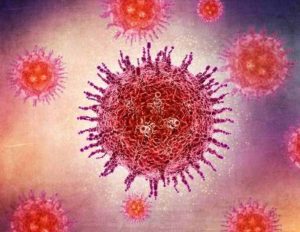
New Delhi: The National Institute of Virology (NIV) in its most recent research found the presence of Clade 9 variant of chicken pox causing the varicella-zoster virus (VZV), for the first time in the country.
This has placed a fresh focus on the importance of genome surveillance.
One of nine herpes viruses known to infect humans is the varicella-zoster virus. This virus primarily affects children and adolescents with chickenpox and affects adults with shingles. A clade is a genotype, subtype, or group that shares an ancestor. Out of 331 suspected cases of VZV examined in the study, 28 with vesicular rashes were reported positive for VZV.
Their analyses verified Clade 1, 5, and 9’s widespread use across the nation. Clade 1 and Clade 5 had previously been found in the nation, but Clade 9 has never been found in India, according to the research. Clade 9 is the most prevalent VZV strain in circulation in nations including Germany, the United Kingdom, and the United States, according to NIV scientist Dr Pragya Yadav, who is also one of the study’s authors.
Kolkata youth tests negative for monkeypox, is being treated for chicken pox
However, this is the initial research to document the spread of VZV Clade 9 in India.
What is chickenpox?
Accoridng to the Mayo Clinic, the Varicella-zoster virus is the infection that causes chickenpox. Small, fluid-filled blisters and an itchy rash are the symptoms. To those who have never had chickenpox or received the chickenpox vaccination, the disease spreads very quickly. In the past, chickenpox was a common issue, but now youngsters are protected against it by vaccination.
ICMR-NIV develops diagnostic tool for Nipah virus screening
Symptoms
After being exposed to the varicella-zoster virus, the rash that results in chickenpox takes 10 to 21 days to manifest. Typically, the rash lasts between 5 and 10 days. One to two days prior to the rash, there may also be other symptoms, such as:
Fever.
Appetite loss.
Headache.
Fatigue and an overall sense of ill health.




 Driving Naari Programme launched in Chandigarh
Driving Naari Programme launched in Chandigarh






























